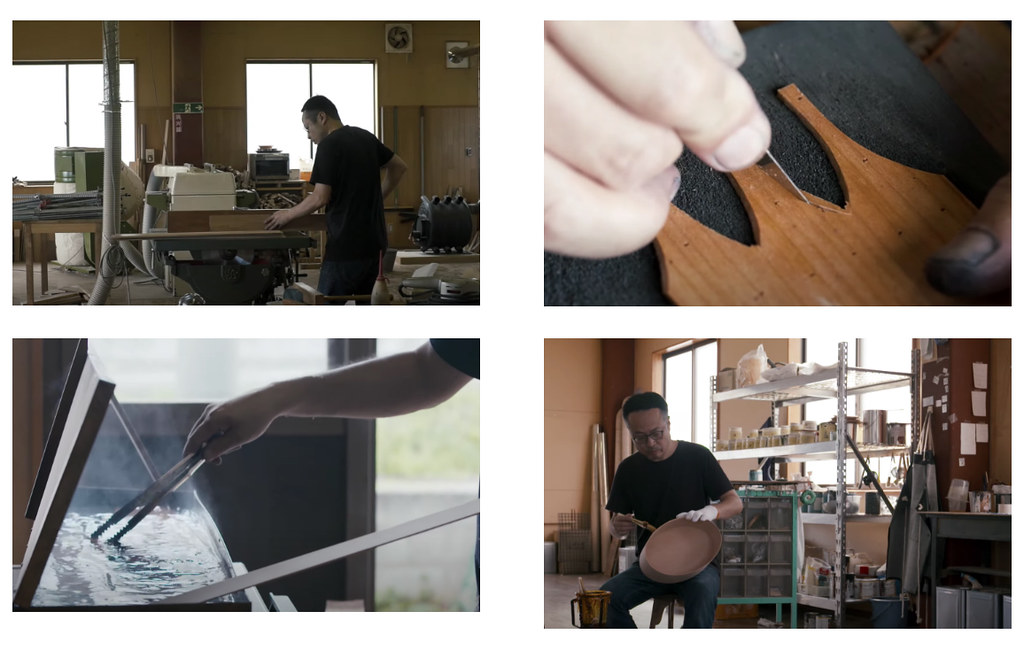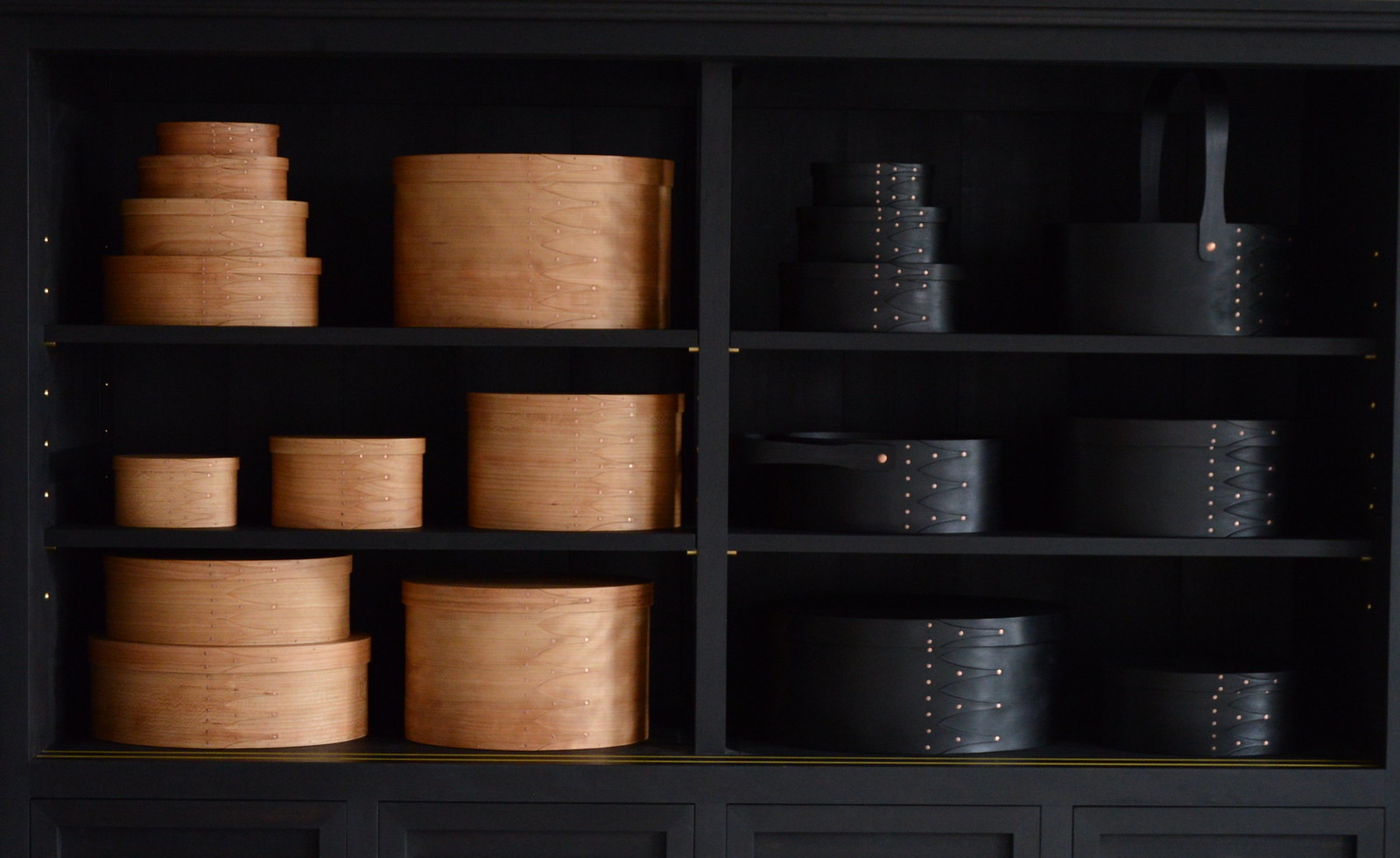


Login
Log in if you have an account
Register
By creating an account with our store, you will be able to move through the checkout process faster, store multiple addresses, view and track your orders in your account, and more.
Create an accountMasashi Ifuji interview

Masashi Ifuji exhibition and interview
Scenery in Boxes
Can you please describe the setting of your workshop in Matsumoto City, Japan?
Every May, there is a big craft event called “Matsumoto Craft Fair”. I took part in this event several times when I lived in Gifu Prefecture. I found this city is a very preferable place to live. There are many beautiful parks in the city; they produce good fruits and vegetables; and most importantly, the dry climate is suitable to treat wood.
You opened your own showroom above the Arts & Science shop called Laboratorio. Can you please tell us how you started working with Arts and Science, and what you wanted to achieve at the Laboratory shop and cafe?
I have been a longtime fan of Arts & Science. I first met Sonia Park in 2009, and we immediately understood each other. Sonia asked me to make wooden things for her and I asked to buy Arts & Science clothing. This relationship culminated in opening of Laboratorio, which is housed in a former pharmacy. Laboratorio is Italian for laboratory, and in this spirit we talked about conducting experiments—to use the process of trial and error to find purpose, whether that is a comfortable space, beautiful goods, or fine foods.
Your boxes are very important in your collection of work. Do you remember when you first saw a Shaker box? Have you ever visited any of the Shaker villages in the United States?
I saw a Shaker box for the first time at the age of 15 in a magazine. I was deeply attracted to this sacred form. When I had my own atelier, I decided to make that beautiful box that I had first seen so many years ago. I thought an oval box could add a new element to home living in Japan.
In 2007, I travelled to the United States with the purpose of visiting Shaker villages and museums.
I visited Pleasant Hill, Mount Lebanon, Hancock, Enfield, Canterbury, Watervliet, Sabbathday Lake, and Old Chatham Shaker sites and museums during this journey. It was a very thorough journey.
How do your customers in Japan use these boxes? In a way, I find that despite the boxes originating in America they have such a purity in design language that they find universal relevance.
Many customers use our boxes for sewing tools, tea tools, accessories, and so on. We found so many various ways to use the boxes that we started to give our own suggestions on our website named “Hako no naka no Fukei” (Scenery in Boxes).
Moving on from the boxes, I was wondering if the shapes of your trays take inspiration from European ceramics?
Yes, some of my tablewares are inspired by Medieval European ceramics, Holland White Delft ware, and Florentine geometric-design ware. Otherwise, I am influenced by African and Asian crafts—even in my furniture products as well. When I studied Anthropology at University, I became a “multiculturalist”.
What is Ifuji the Box Tailor? And why was this environment important for you?
A box tailor is the bespoke service of our oval box. The characteristic joint of the oval box is famously called the “swallow tail” which reminded me of a “clothes tailor”. The Box Tailer is a service that allows you to have a custom box created for special purposes to hold specific objects. You are able to choose from tens of thousands of combinations of shapes, materials, sizes, and colours. We opened our first “Box Tailor” in Tokyo in April. My first thought was that when a customer wanted a special box, I wanted to respond to that request. This is only possible because we are a small, handmade manufacturer. It will be a challenge, but I believe that the experience will be a valuable asset.
7)I love your folding table, it reminds me of old English campaign furniture. Do you ever camp, or spend time outdoors?
Yes, I have been a serious lover of camping since I was a teenager, but now I’m afraid I don’t have as much time for it.
My folding table derives from early 20th century English furniture. I first saw it on the 70’s catalog about Mingei craft which was on exhibit at a department store in Tokyo. I fell in love with it at a glance even though I had not seen the real thing. Actually, I finally found one at an antique store in Berlin several years ago.
What is an article of your work you particularly enjoy using in your own home?
Of course it's the oval box. I use a number of them, as I have a lot of items to store and I don't want any plastic to be visible in the room. When you use it, you will notice that the colour and lustre gradually change and it will become familiar within your house. I also use my wood tableware. It’s particularly good for carrying glasses, or for serving bread with. I'd like to use the furniture as well, but I'm renting now, so if I ever own my own home, I'll make a lot of furniture and use it. Wooden objects develop patina as they are used, becoming a part of family history, and before you know it, they become indispensable. I think it's the most human-friendly material.











